Every busy household needs a central hub where schedules align, important papers find a home, and everyone stays informed. You feel the constant juggle, the search for misplaced keys, or the forgotten appointment. A well-designed family command center transforms daily chaos into smooth, predictable routines. This dedicated home organization station acts as the brain of your home, reducing stress and helping your family function with greater efficiency. You do not need a massive space or an unlimited budget to create this essential system. With practical planning and a few smart choices, you can build a personalized command center that truly works for your family.
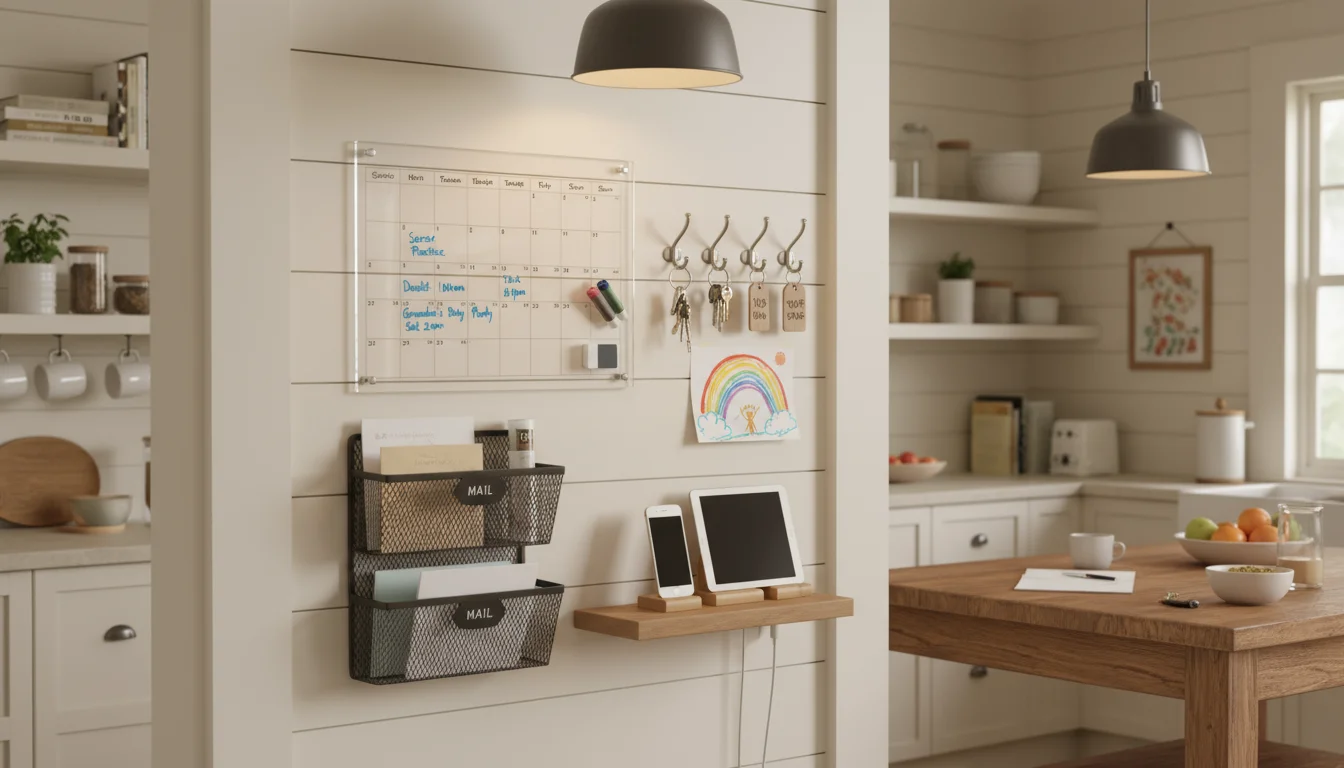
What is a Family Command Center?
A family command center is a designated physical space in your home that centralizes all essential information and items needed for daily family operations. Think of it as your home’s mission control for schedules, communication, and important documents. This central station consolidates calendars, to-do lists, mail, school papers, keys, and charging cords, preventing clutter spread throughout your house. It ensures every family member can easily access crucial information without asking you repeatedly. You establish a clear zone for important details, making your home run more smoothly. You avoid the frantic search for permission slips or the question, “What’s for dinner tonight?” because the answers live in one reliable spot.
The concept of “zones” in home organization means assigning specific functions to specific areas. Your command center is a prime example of a highly functional zone. It might be a small section of a kitchen wall, a dedicated cabinet, a hallway nook, or even a corner of your home office. The size and complexity adapt to your family’s unique needs and available space. The goal remains consistent: to create an intuitive, accessible hub for critical information and frequently used items. This organization approach helps everyone in the family, from young children learning routines to busy adults managing multiple schedules, contributing to a more harmonious household.

Why Your Family Needs a Command Center
You face a constant barrage of information every day. School notices, appointment cards, bill reminders, grocery lists, and permission slips all demand your attention. Without a dedicated system, these items quickly become scattered, creating visual clutter and mental stress. A family command center directly addresses these challenges by creating a single point of reference for everyone. You eliminate the “I can’t find it” dilemma for important papers and streamline communication, reducing the need for constant verbal reminders.
Consider the benefits you gain:
- Reduced Mental Load: You no longer carry the full burden of remembering every detail. The command center takes over as a shared memory bank.
- Improved Communication: All family members see upcoming events and shared tasks at a glance, fostering better teamwork.
- Enhanced Time Management: With schedules centralized, you identify potential conflicts or open slots more easily, helping you plan your days effectively.
- Less Clutter: Important papers and small items have a designated home, preventing them from accumulating on countertops or tables.
- Increased Accountability: When tasks or chores are visible on a shared board, everyone understands their responsibilities.
- Smoother Mornings and Evenings: Keys, wallets, and school bags are always in their designated spots, eliminating frantic searches during peak rush hours. According to organization experts, establishing consistent routines significantly reduces morning stress for families.
You invest a small amount of time and effort upfront, and you reap significant long-term rewards in the form of reduced stress, increased efficiency, and a calmer home environment. This Real Simple guide on organizing often highlights how effective systems simplify daily life, and a command center perfectly embodies this principle.

Choosing the Right Location for Your Command Center
The success of your family command center largely depends on its placement. You need a location that is visible, accessible, and frequently used by most family members. This ensures consistent engagement and prevents the center from becoming an ignored corner. Consider the natural traffic flow of your home and where your family congregates for daily activities.
Here are common and effective locations, along with their pros and cons:
- Kitchen: Often the heart of the home, kitchens offer high visibility and are natural gathering spots.
- Pros: Central, easy to access during meal prep or breakfast, often has existing wall space.
- Cons: Can feel cluttered if space is limited, potential for food splatters if not protected.
You might use a section of a blank wall, the side of a refrigerator, or a pantry door.
- Entryway or Mudroom: Ideal for managing items as family members enter and exit the home.
- Pros: Perfect for key drops, mail sorting, and grabbing last-minute items, minimizes items brought further into the house.
- Cons: May be a smaller space, often a high-traffic area requiring durable components.
Consider a narrow wall organizer or a floating shelf unit here.
- Hallway Nook: An often underutilized space that can be transformed into a functional hub.
- Pros: Out of the main living areas but still accessible, can be visually appealing without dominating a room.
- Cons: Might lack natural light, can feel cramped if the hallway is narrow.
You can install a slim desk or a series of wall-mounted organizers.
- Home Office or Den: If your family primarily communicates and organizes within a dedicated workspace.
- Pros: Quiet, conducive to focused work and planning, keeps household logistics separate from relaxation areas.
- Cons: Less accessible for younger children or family members who do not frequently use the office.
Integrate it into existing desk space or a wall above a filing cabinet.
Before you commit, observe your family’s habits for a few days. Where do papers tend to land? Where do keys get dropped? Where do you have those quick family chats about the day’s events? The answers will guide you to the perfect spot for your new home organization station. Remember, the best location is one that encourages consistent use, making your command center an indispensable part of your daily rhythm.
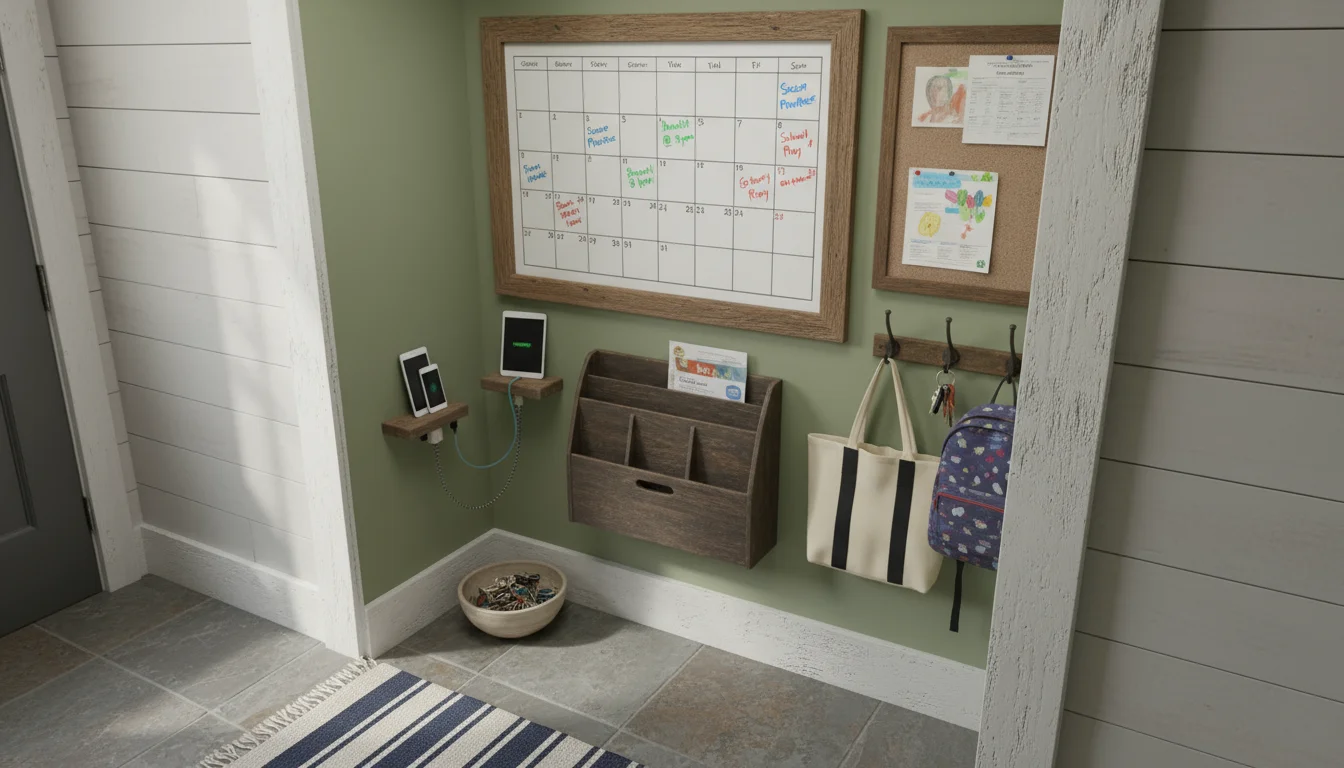
Essential Components of an Effective Command Center
A truly effective command center is not just a collection of items, but a thoughtfully curated system that addresses your family’s specific needs. While the exact components vary, several key elements form the backbone of a highly functional family organization station. You want to include tools that help with scheduling, communication, and managing incoming information.
Here are the core components you should consider:
- Central Family Calendar: This is arguably the most crucial element.
- Purpose: Visually displays everyone’s appointments, practices, deadlines, and events.
- Options: A large dry-erase board calendar, a magnetic whiteboard, a wall calendar, or a digital display tablet. Choose one where you can write down or input events for each family member, ideally color-coded.
- Actionable Insight: Update it weekly, ideally during a Sunday family meeting, to ensure everyone knows the upcoming schedule.
- “To Do” or Task List: Keep track of chores, errands, and household projects.
- Purpose: Assigns responsibilities and ensures important tasks are not forgotten.
- Options: A smaller dry-erase board, a chalkboard, a sticky note dispenser, or even a simple clipboard with a pad of paper.
- Actionable Insight: Break down large tasks into smaller, manageable steps to encourage completion.
- Mail and Paper Sorting System: Tame the paper clutter monster immediately upon entry.
- Purpose: Prevents bills, school flyers, and junk mail from piling up on countertops.
- Options: Wall-mounted file folders (one for “Action,” one for “To File,” one for “Shred”), tiered trays, or individual slots for each family member.
- Actionable Insight: Process mail as soon as it enters the house. Designate one slot for “papers to sign” for school.
- Key and Wallet Drop Zone: Eliminate the frantic search for essentials.
- Purpose: Provides a consistent, visible spot for frequently used items.
- Options: Hooks, a small tray, a decorative bowl, or a wall-mounted organizer with a shelf.
- Actionable Insight: Install these at eye level or just below, so they are impossible to miss when coming or going.
- Charging Station: Keep devices powered and cords contained.
- Purpose: Centralizes device charging, reducing cord clutter and ensuring devices are ready when needed.
- Options: A multi-device charging hub, a small shelf with cable management clips, or a box designed to hide cords.
- Actionable Insight: Position this away from main activity zones to encourage mindful device usage, perhaps encouraging charging overnight.
- Grocery List or Meal Planner: Streamline your kitchen operations.
- Purpose: Simplifies meal planning and ensures you have all necessary ingredients.
- Options: A dedicated magnetic whiteboard for meal planning, a tear-off grocery list pad, or a small chalkboard.
- Actionable Insight: Plan meals for the week on Sunday, then immediately transfer needed ingredients to the grocery list.
- Pens, Markers, and Supplies: Keep writing tools handy.
- Purpose: Ensures you can immediately update information without hunting for a pen.
- Options: A small cup, a magnetic pen holder, or a designated slot in a wall organizer.
- Actionable Insight: Keep an eraser for dry-erase boards readily available.
You adapt these components to fit your family’s age, activities, and specific needs. A family with young children might prioritize a chore chart, while teenagers might benefit from a charging station and personal mail slots. The best command center evolves with your family over time.
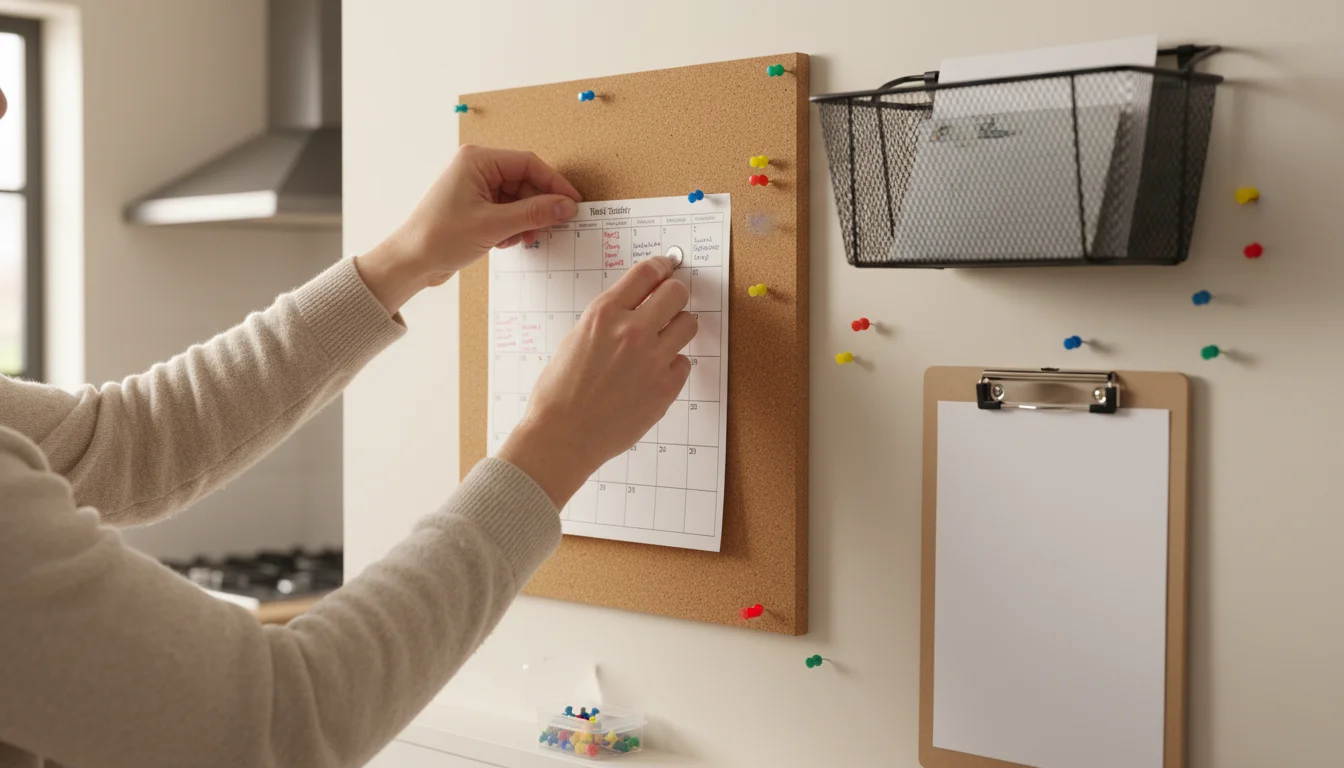
Building Your Command Center on a Budget: A Step-by-Step Guide
Creating a functional family command center does not require expensive custom solutions. You can build an incredibly effective home organization station using affordable materials, DIY ingenuity, and smart shopping. The key is to prioritize function and adapt to what you already own or can acquire economically. This DIY approach empowers you to create a personalized system without breaking the bank.

Step 1: Assess Your Needs and Space
Before you buy anything, take stock of your family’s unique requirements. What are your biggest organizational pain points? Are you losing keys constantly, missing appointments, or buried under school papers? Identify the specific problems your command center needs to solve.
- Family Survey: Ask each family member what they need from a central hub. What information do they frequently ask for? What items do they wish had a designated home?
- Current Clutter Hotspots: Observe where mail, papers, and small items accumulate. These indicate what your command center needs to capture.
- Available Space: Measure the wall space, cabinet interior, or corner you have chosen for your command center. Knowing your dimensions prevents buying items that will not fit. For small spaces, think vertically and consider slim, wall-mounted solutions.

Step 2: Source Budget-Friendly Materials
You can find many useful items for your command center without spending much. Look around your home, check thrift stores, or visit discount retailers.
- Repurpose What You Have:
- Old Picture Frames: Remove the glass, paint the frame, and use it with a piece of whiteboard material or chalkboard paint for custom boards.
- Baskets and Bins: Use existing decorative baskets for mail or key drops.
- Cereal Boxes: Cut them down and cover with decorative paper for custom mail sorters.
- DIY Options:
- Chalkboard Paint: Apply directly to a section of wall or a piece of plywood for an instant, customizable board.
- Cork Board: Buy a large sheet of cork and mount it, or combine smaller cork tiles.
- Magnet Board: Use a galvanized metal sheet from a hardware store for a durable magnetic surface.
- Affordable Retail Finds:
- Dollar Stores: Often carry small dry-erase boards, hooks, plastic bins, and basic school supplies.
- IKEA or Discount Stores: Look for affordable wall organizers, shelves, and containers. The Container Store offers tips and products that can inspire budget-friendly alternatives.
- Thrift Stores/Habitat ReStore: Find inexpensive frames, small shelves, or even vintage cabinets you can repurpose.

Step 3: Sketch Your Layout
Before you hang anything, draw a simple sketch of your command center. This visual plan helps you arrange components logically and utilize your space effectively. Think about the flow: where will mail enter? Where will the calendar be most visible? Where do keys need to go?
- Prioritize Placement: Place the most frequently used items (like the calendar and key hooks) at an easily accessible height.
- Vertical Space: Maximize vertical space with wall-mounted shelves, pockets, or tiered organizers.
- Visual Balance: Aim for a layout that feels balanced and organized, not cramped.
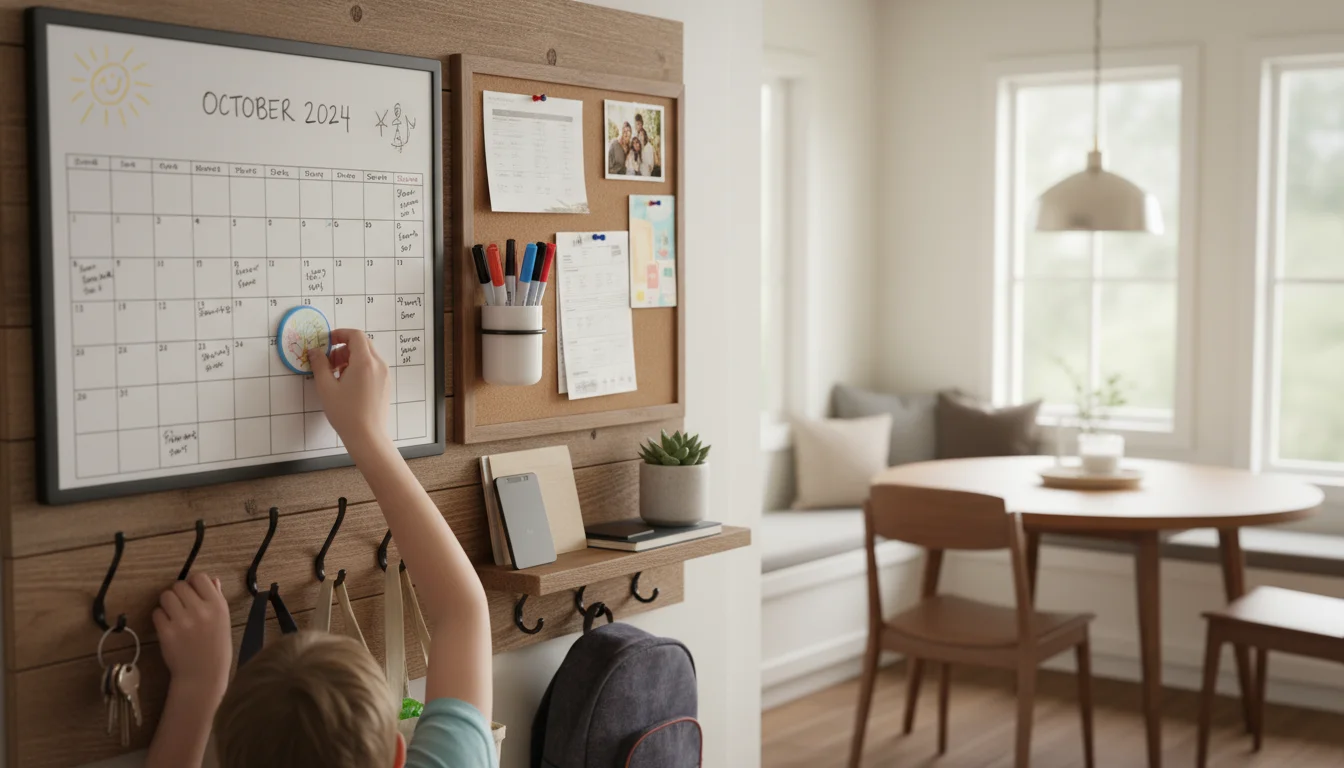
Step 4: Installation and Personalization
Once you have your materials and plan, it is time to assemble your command center. For renters, use temporary adhesive strips (like command hooks) to avoid wall damage. Homeowners can use screws and anchors for more permanent fixtures.
- Mount Components: Secure your calendar, mail sorters, and key hooks. Ensure everything is stable and functional.
- Add Personal Touches: Incorporate elements that make the space inviting. This could be a small plant, a family photo, or a pop of color that matches your home decor. When family members feel connected to the space, they use it more readily.
- Stock Supplies: Place pens, markers, magnets, and sticky notes within easy reach.
- Trial Run: Start using your command center immediately. Observe how your family interacts with it.
Remember, your command center is a living system. It will evolve. Be open to making adjustments as you discover what works best for your family. A DIY approach allows you the flexibility to adapt without significant financial commitment.
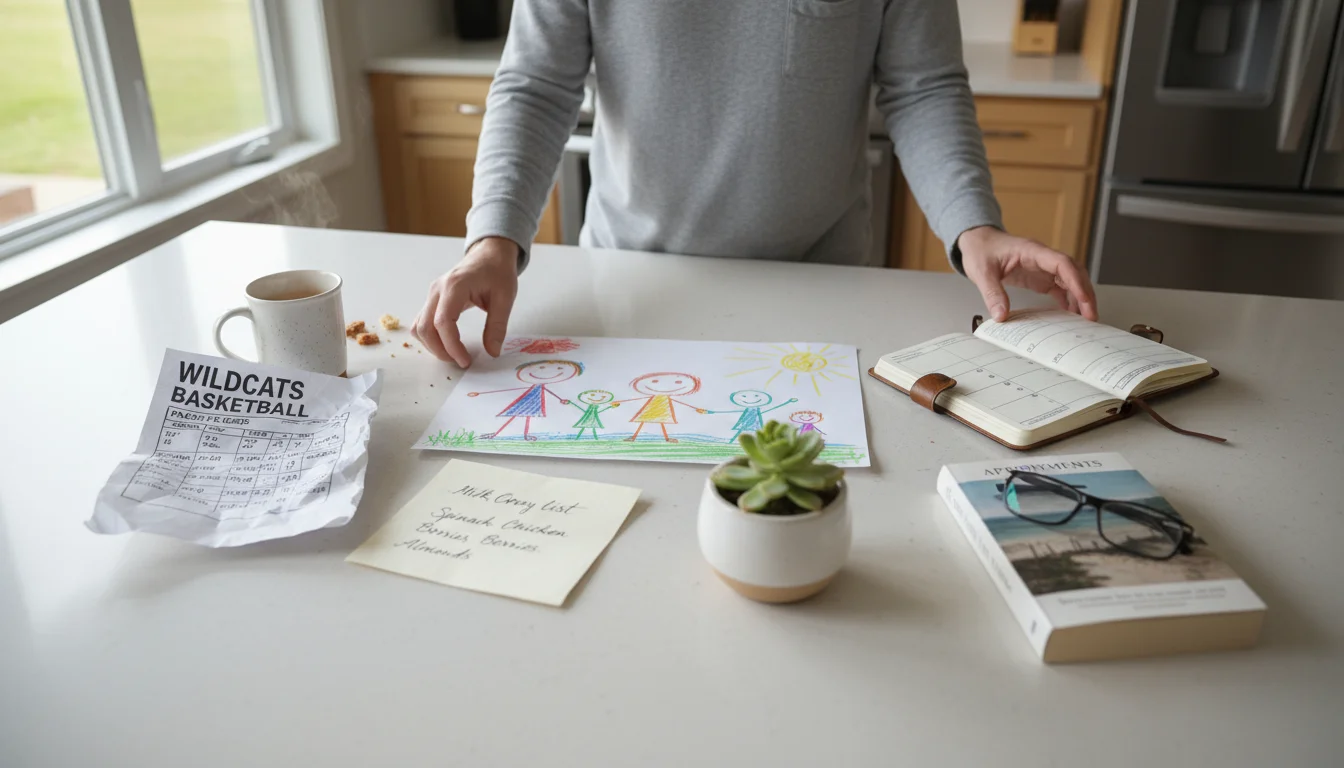
Tailoring Your Command Center to Different Family Needs
Every family is unique, and your command center should reflect that individuality. What works for a family with toddlers will differ from what a family with teenagers or empty nesters needs. You design a system that genuinely supports your household’s rhythm and priorities, ensuring it remains a helpful tool rather than another source of clutter.
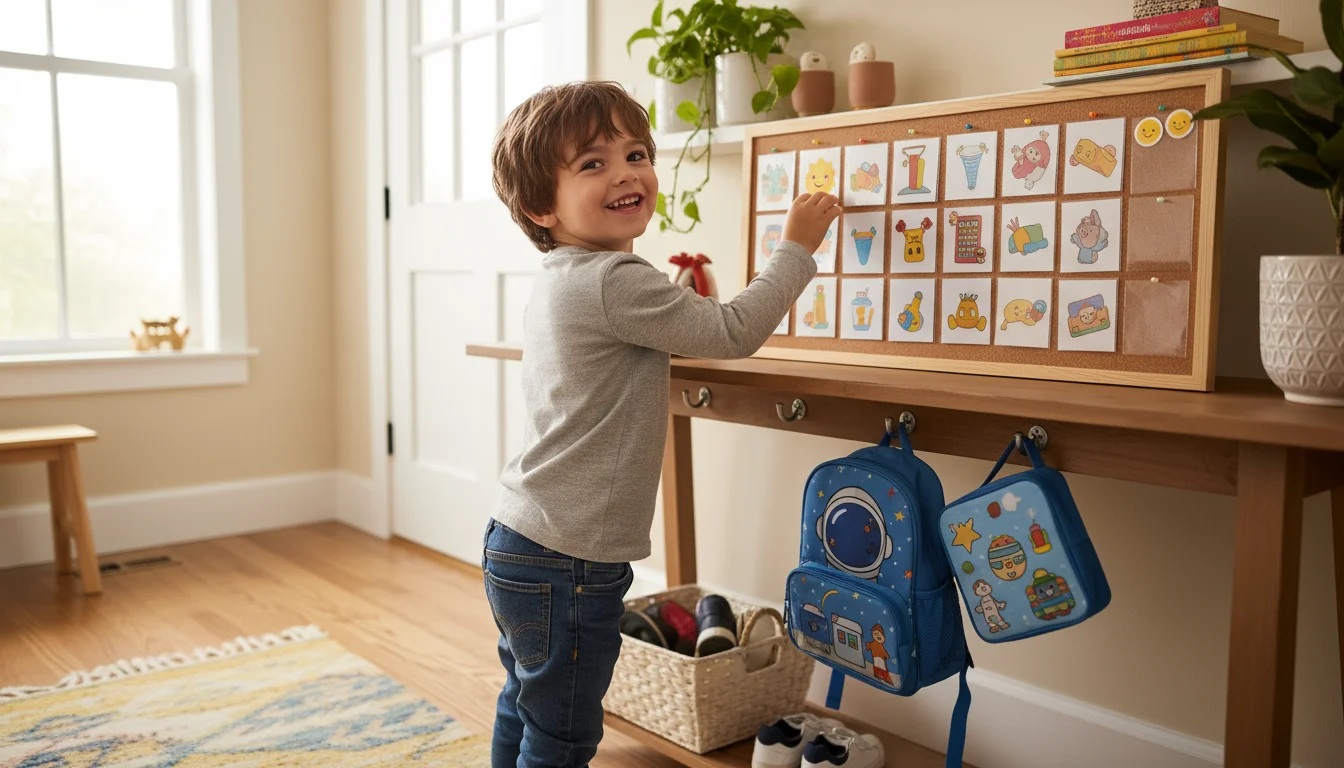
Families with Young Children
For families with preschoolers and elementary schoolers, visual cues and accessibility are paramount. Your command center should engage little ones and help them understand routines.
- Visual Chore Charts: Use pictures or simple drawings for chores. When children see their responsibilities, they become more accountable.
- “Show and Tell” Display: A dedicated spot for artwork or important school notices. This celebrates their achievements and keeps papers off the fridge.
- Low-Level Accessibility: Place chore charts, cubbies for backpacks, and perhaps a small “out the door” basket at a height children can easily reach.
- Reward System Integration: If you use a sticker chart or a similar system, integrate it into the command center for easy tracking.
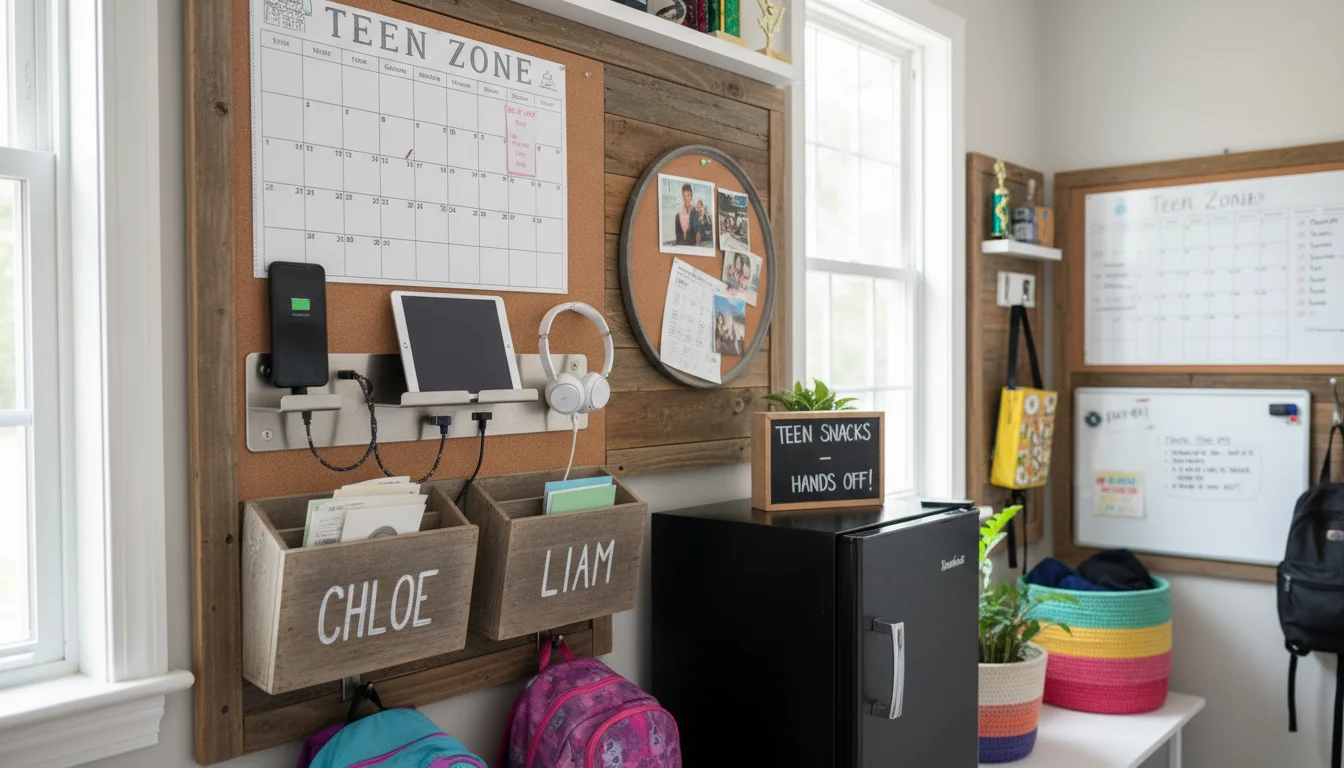
Families with Teenagers
Teenagers often have complex schedules, school assignments, and social lives. Your command center can help them manage their independence and responsibilities.
- Individualized Schedules: Ensure space for each teen to note their specific appointments, extracurriculars, and project deadlines.
- Homework & Project Board: A section for upcoming deadlines or a simple “due date” list can help them stay on track.
- Charging Station: A robust charging station for multiple devices is essential. Teens rely heavily on their phones and tablets, and a central charging spot keeps devices organized.
- Designated Mail/Paper Slots: Give each teen their own slot for school forms, permission slips, or personal mail to manage their documents independently.
- Family Message Board: A dry-erase or chalkboard for quick notes, reminders, or even a daily “check-in” question.
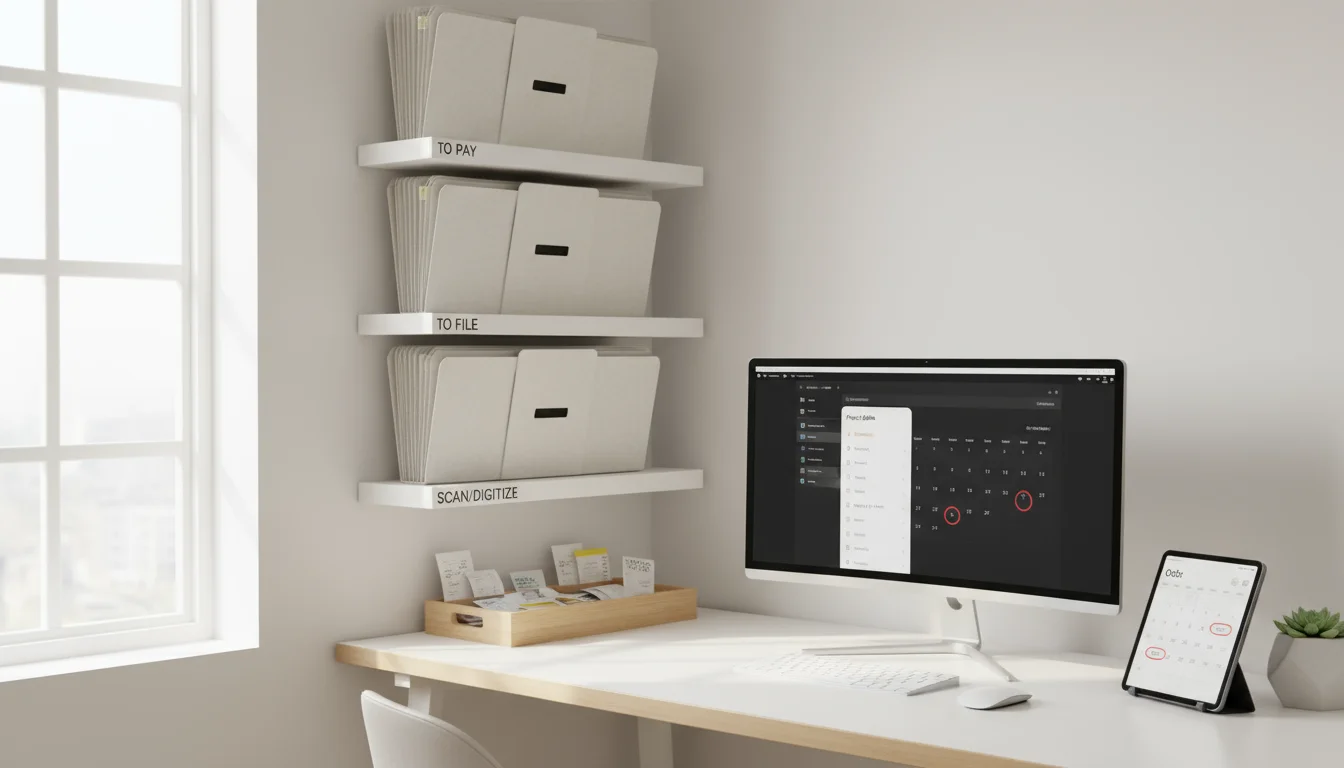
Busy Professionals / Adult Households
Even without children, adults benefit from a centralized organization system. Your command center streamlines household management and personal productivity.
- Advanced Mail & Document Processing: More detailed filing systems for bills, statements, and important documents. Consider separate folders for “To Pay,” “To File,” and “Scan/Digitize.”
- Financial Hub: A discreet spot for bill organizers or a small folder for receipts to be processed.
- Project Management Section: A small section for tracking personal projects, home improvement tasks, or longer-term goals.
- Smart Home Integration: If you use smart devices, the command center can be where you place a smart speaker or a tablet for controlling home systems, reviewing digital calendars, or managing grocery lists.
- Home Maintenance Calendar: Track essential tasks like filter changes, appliance maintenance, or seasonal cleaning. You can find excellent advice on regular home maintenance on Family Handyman.
You adapt the command center to fit your lifestyle, whether it is a minimalist setup or a comprehensive family hub. The core principle remains: centralize information and essentials to reduce friction in your daily life.
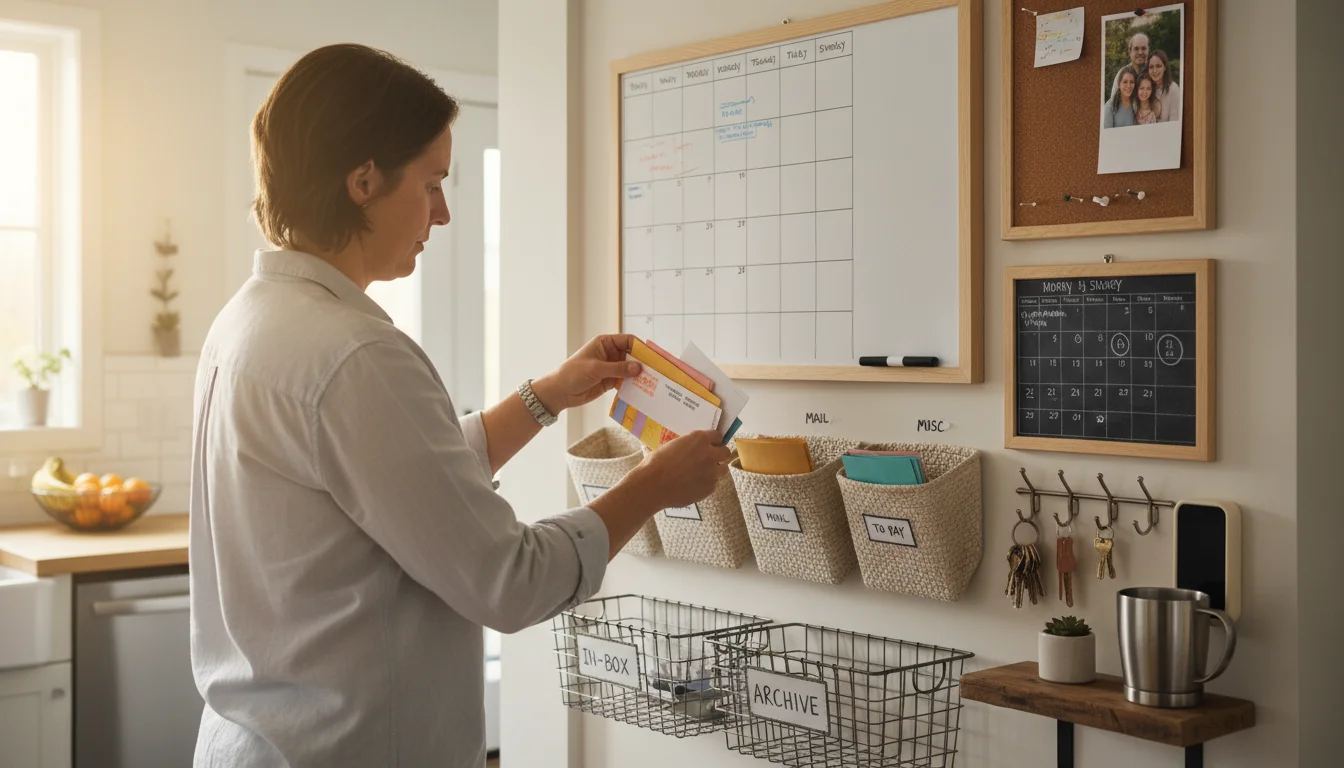
Maintaining Your Command Center: Keeping Chaos at Bay
Building a family command center represents only half the journey. The other, equally crucial half involves consistent maintenance to ensure it remains a functional, uncluttered home organization station. Without regular attention, even the best system can fall into disarray. You establish routines for review and upkeep, ensuring your command center continues to serve its purpose effectively.

Daily Touchpoints for Upkeep
Integrate quick check-ins into your daily routine. These small, consistent actions prevent major overhauls later.
- Incoming Mail and Papers: Process these immediately. Sort into “action,” “file,” or “shred.” Avoid letting papers pile up in the “incoming” slot for more than a day.
- Clear the Key/Wallet Zone: Ensure keys and wallets return to their designated hooks or trays each evening.
- Update the Calendar: As appointments pass, erase or cross them off. Add new events as they arise, preventing outdated information.
- Check the To-Do List: Mark off completed tasks. If a task remains unfinished, either move it to the next day or re-evaluate its urgency.
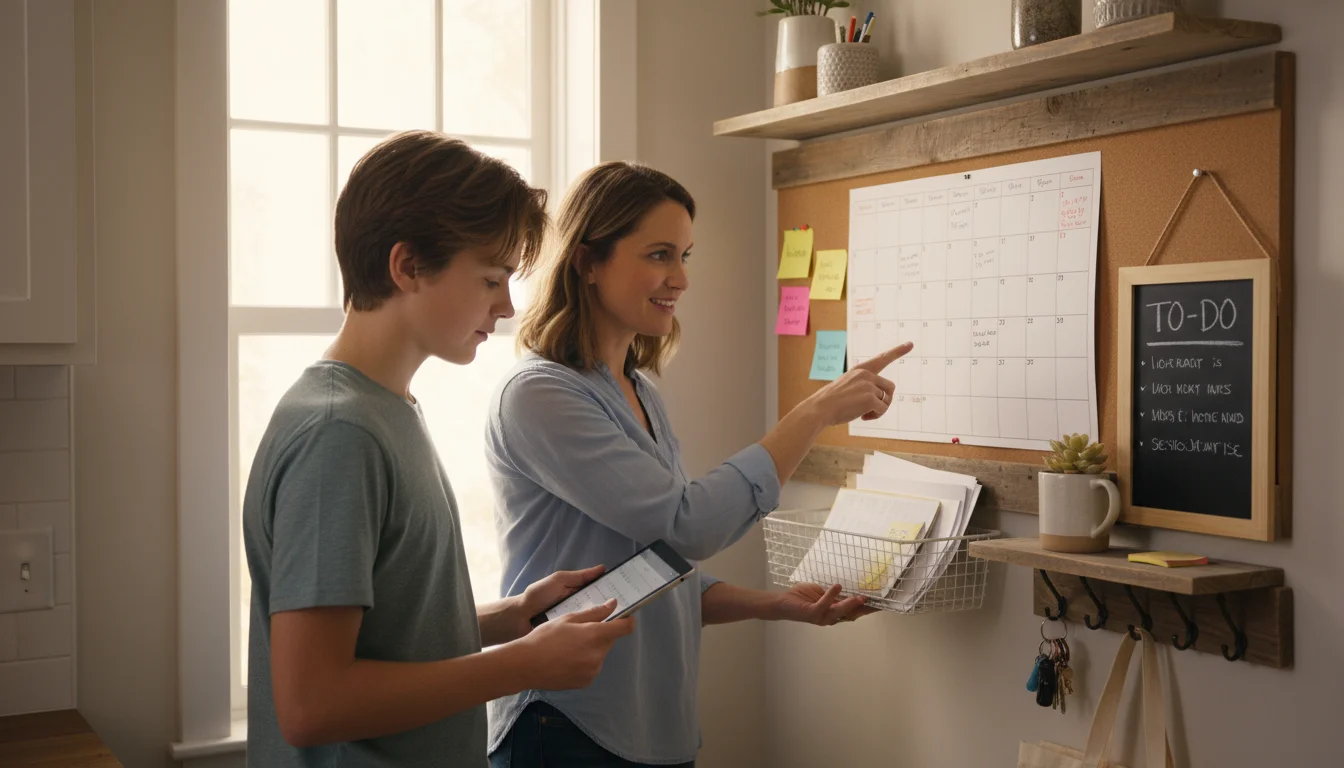
Weekly Review and Refresh
Dedicate a few minutes once a week, perhaps during a quiet Sunday evening, to a more thorough review. This ensures the command center stays current and ready for the week ahead.
- Calendar Reconciliation: Compare the command center calendar with individual digital calendars (if used) to catch any discrepancies. Add new appointments or events for the upcoming week.
- Paper Purge: Go through all “action” and “file” papers. Take action on what is pending (e.g., pay bills, sign forms) and file away what needs to be kept. Shred or recycle unnecessary documents.
- Grocery and Meal Plan Update: Plan meals for the week, update the grocery list, and ensure you have all necessary ingredients noted.
- Task Assignment Review: Discuss the chore chart or task list with your family. Acknowledge completed tasks and assign new ones.
- Supply Check: Replenish dry-erase markers, pens, sticky notes, or any other supplies running low.
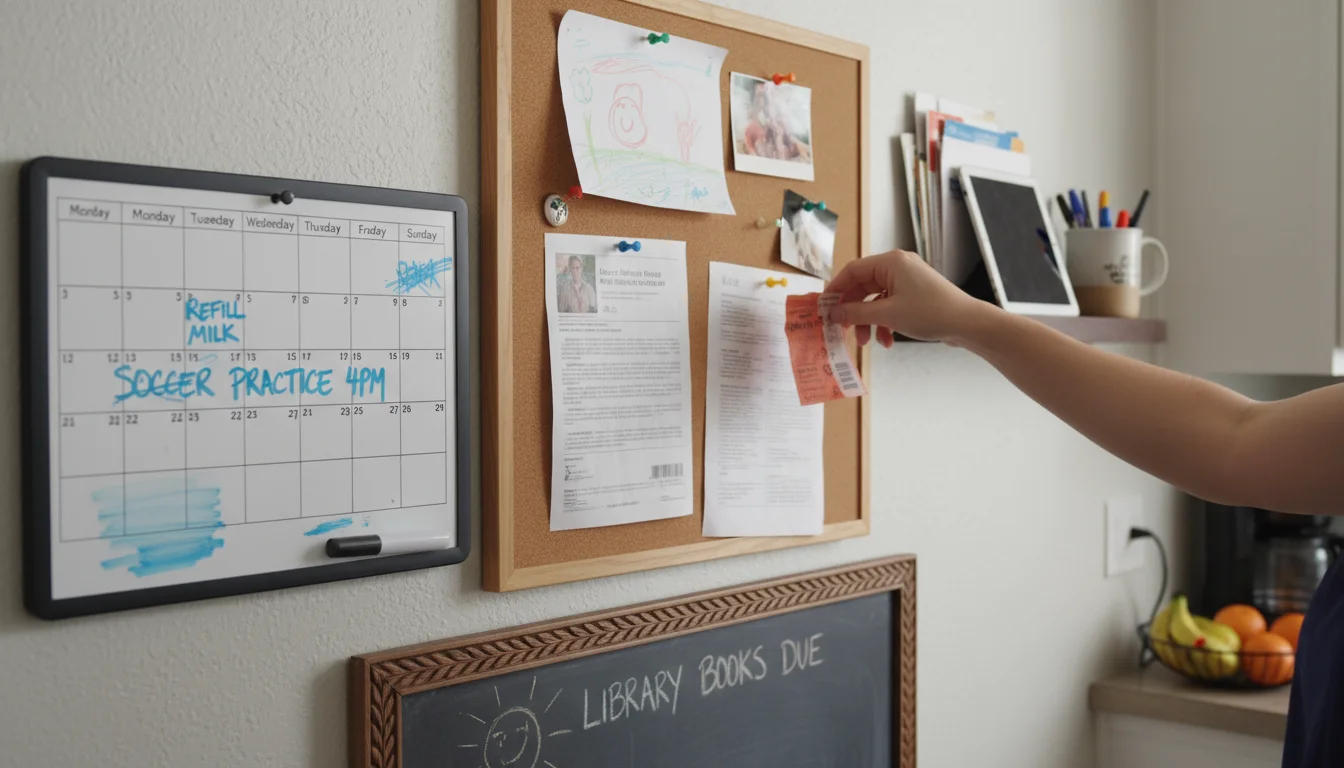
Troubleshooting Common Issues
Even with good intentions, you might encounter challenges. Address these proactively.
- Overwhelm/Clutter Creep: If the command center starts to accumulate too much, it likely has too many functions or too many items. Simplify. Remove components that are not actively used. Re-evaluate if every item truly needs to be there. Less is often more.
- Lack of Engagement: If family members are not using it, the command center might be in the wrong location, or its purpose is not clear. Involve your family in problem-solving. Ask what would make it more useful for them. Is it too high, too complicated, or simply forgotten?
- Outdated Information: This typically stems from a lack of a consistent weekly review. Make the weekly refresh a non-negotiable part of your routine. Set a reminder on your phone or pair it with another regular activity, like weekly meal prep.
- Running Out of Space: If your family grows or needs change, your command center might need to expand. This could mean adding another wall-mounted pocket, a small floating shelf, or even digitizing some information to free up physical space.
Maintaining your command center requires discipline, but the payoff is immense. You empower your family with a clear, reliable system for managing daily life, significantly reducing stress and enhancing your home’s overall harmony.
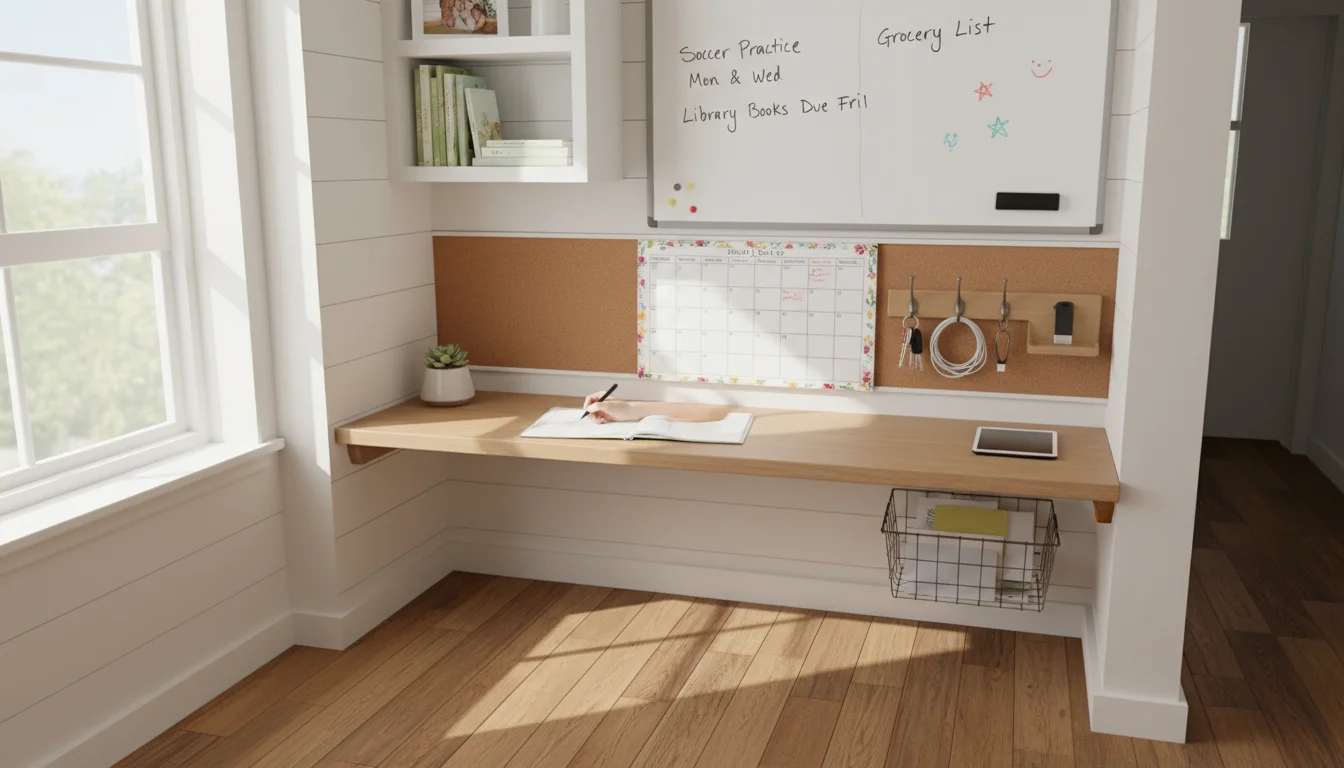
Frequently Asked Questions
What if I have a really small space, like an apartment? Can I still create an effective command center?
Absolutely. You can create an effective command center even in a small apartment. Focus on vertical space and multi-functional items. A narrow wall-mounted organizer with key hooks, a magnetic dry-erase board for schedules, and slim mail slots can fit almost anywhere. Consider the back of a pantry door, the inside of a cabinet, or a small section of a hallway wall. The key is to be selective about what you include, prioritizing only the most essential components for your family organization station.
How long does it take to set up a command center?
The setup time varies based on your chosen complexity and DIY involvement. A basic command center using existing items might take an hour or two to plan and assemble. A more comprehensive system involving painting, mounting multiple components, and gathering new supplies could take a weekend. You do not need to do it all at once; start with the most critical elements, like a calendar and mail sorter, and expand as your budget and time allow. The most important part is starting.
How do I get my family to actually use the command center?
Involving your family from the very beginning significantly increases their engagement. Ask for their input on what they want to see in the command center and where it should go. During the setup, explain its purpose and demonstrate how to use each component. Make it a family habit to check the command center daily, perhaps before dinner or after school. Positive reinforcement and gentle reminders work better than nagging. If you make it an indispensable tool for everyone, they will adopt it. For instance, put the Wi-Fi password on the command center, making it a valuable resource everyone needs.
What if our family schedule changes frequently? How do we keep the command center updated?
Frequent schedule changes necessitate an easily editable system. A large dry-erase board calendar or a digital display works best in these situations, allowing for quick updates. Establish a dedicated “update” time, perhaps every Sunday evening, when you review the upcoming week’s schedule with the entire family. Encourage everyone to write down new appointments or changes as soon as they occur, not just relying on one person. Consistency in updating ensures your family command center remains a reliable source of information, no matter how dynamic your schedule becomes.
For expert home organization guidance, visit
National Association of Professional Organizers, Institute for Challenging Disorganization, Consumer Reports — Home and This Old House.
Disclaimer: This article is for informational purposes only and is not a substitute for professional advice. Consult professional organizers or specialists for personalized recommendations.
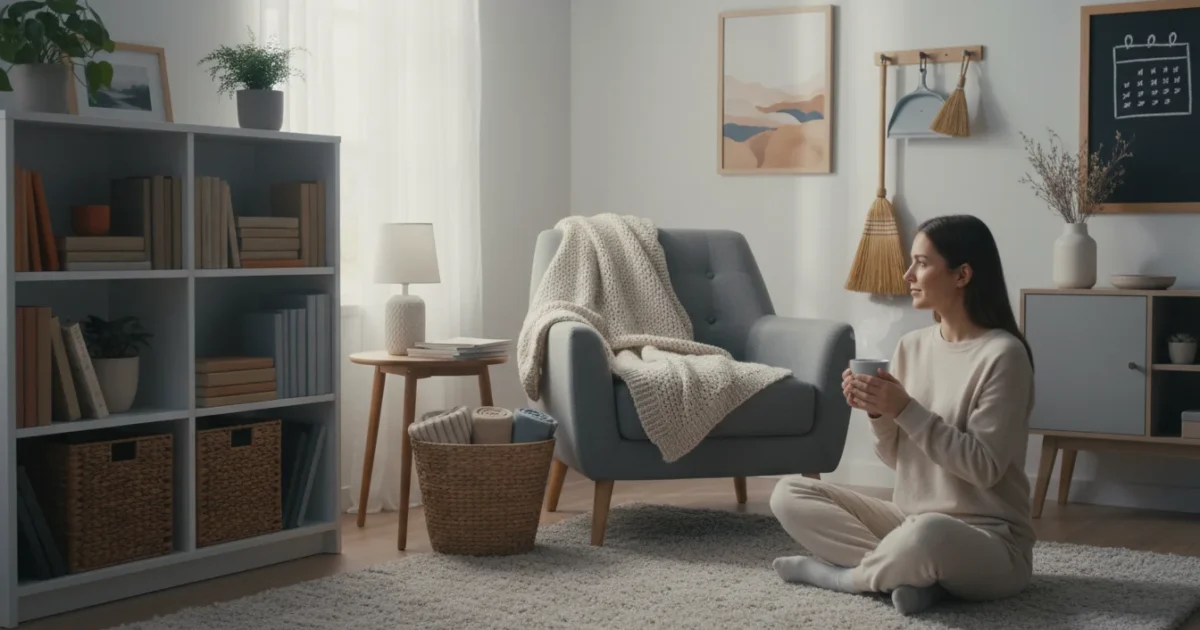

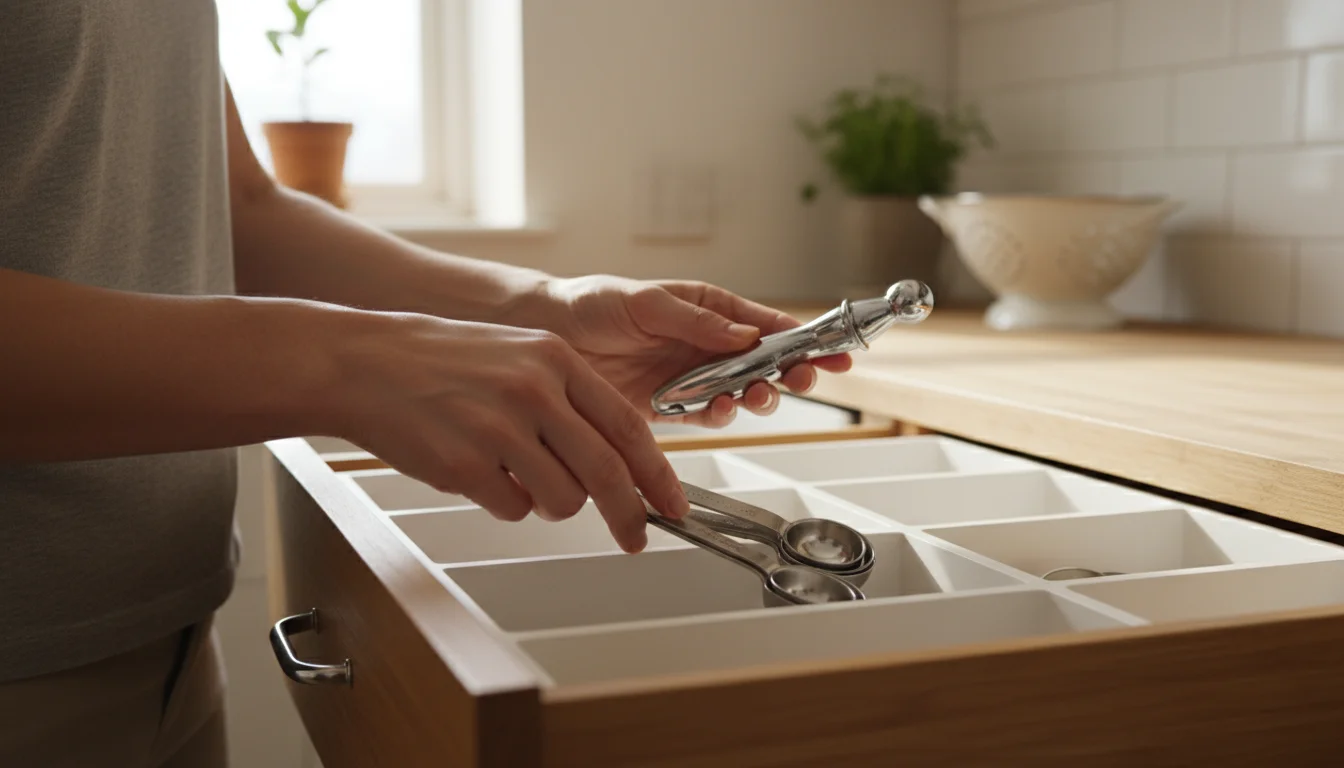

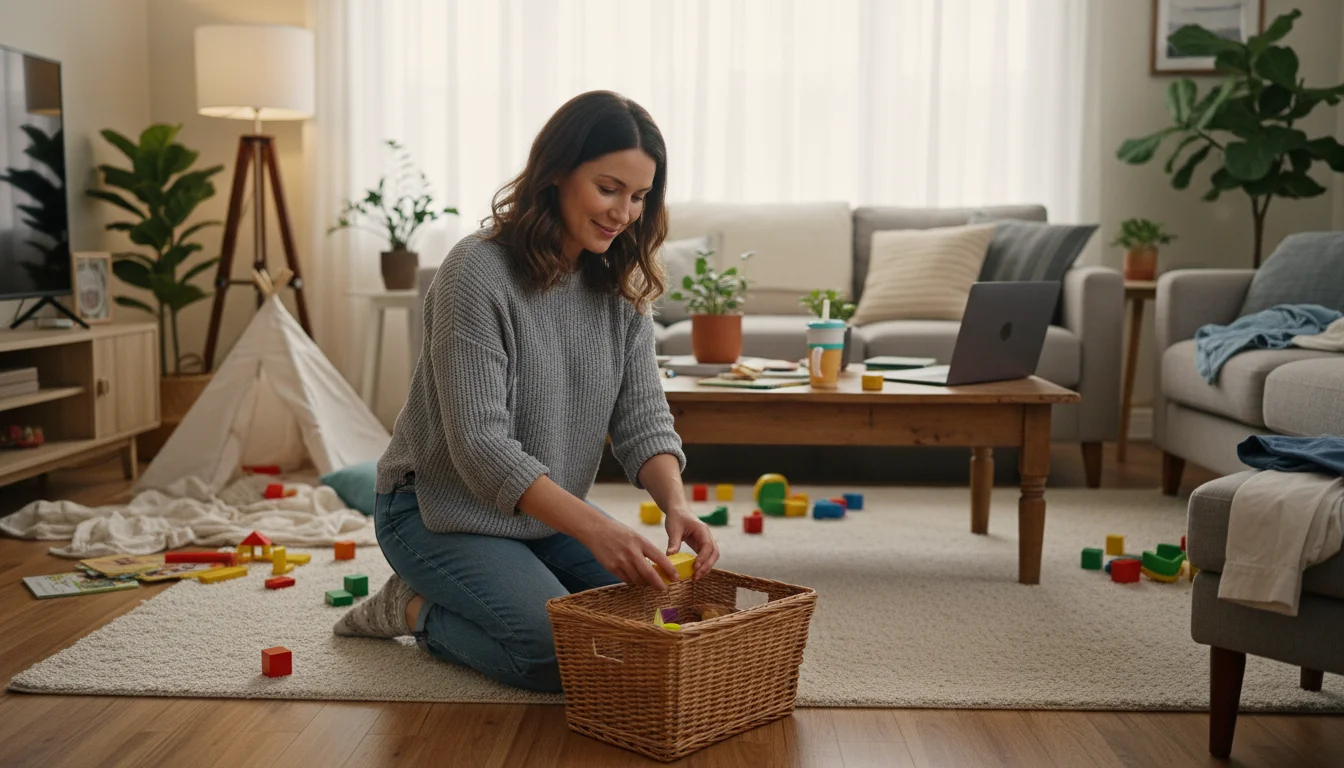

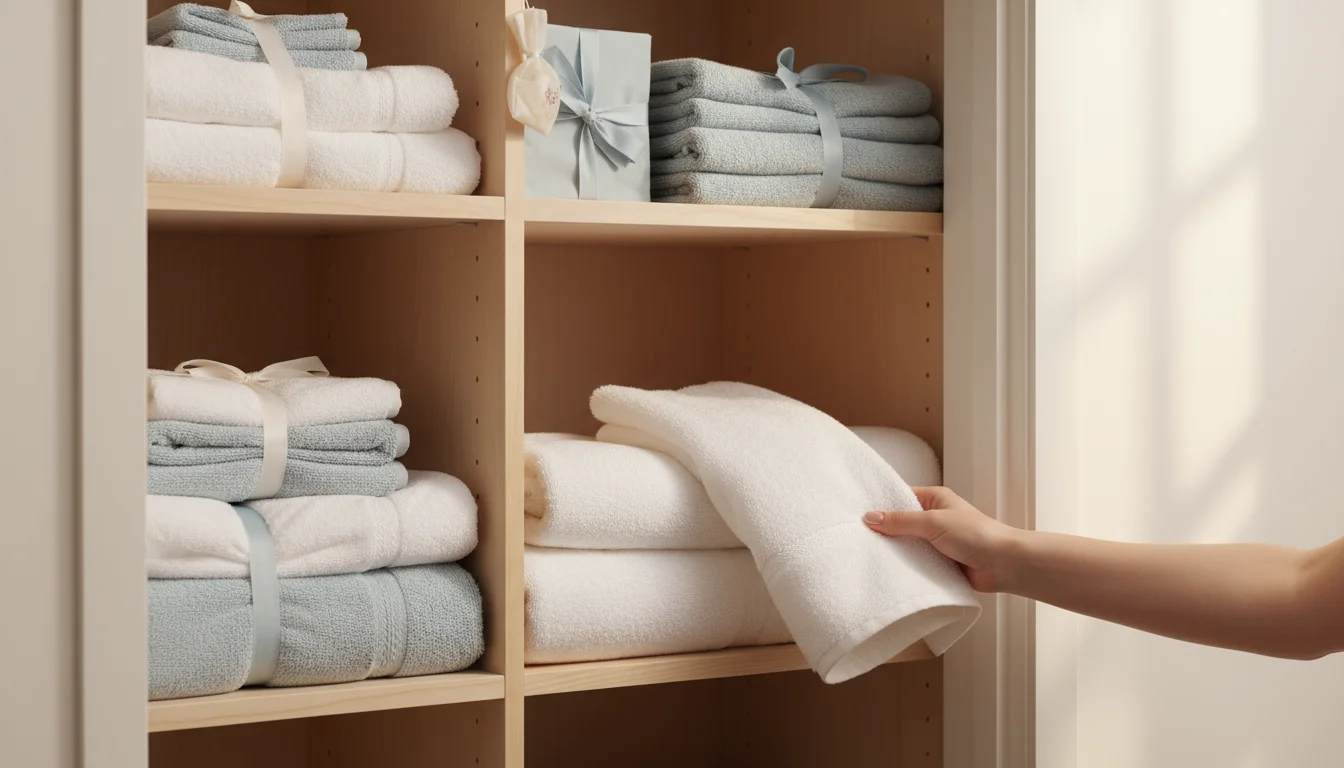

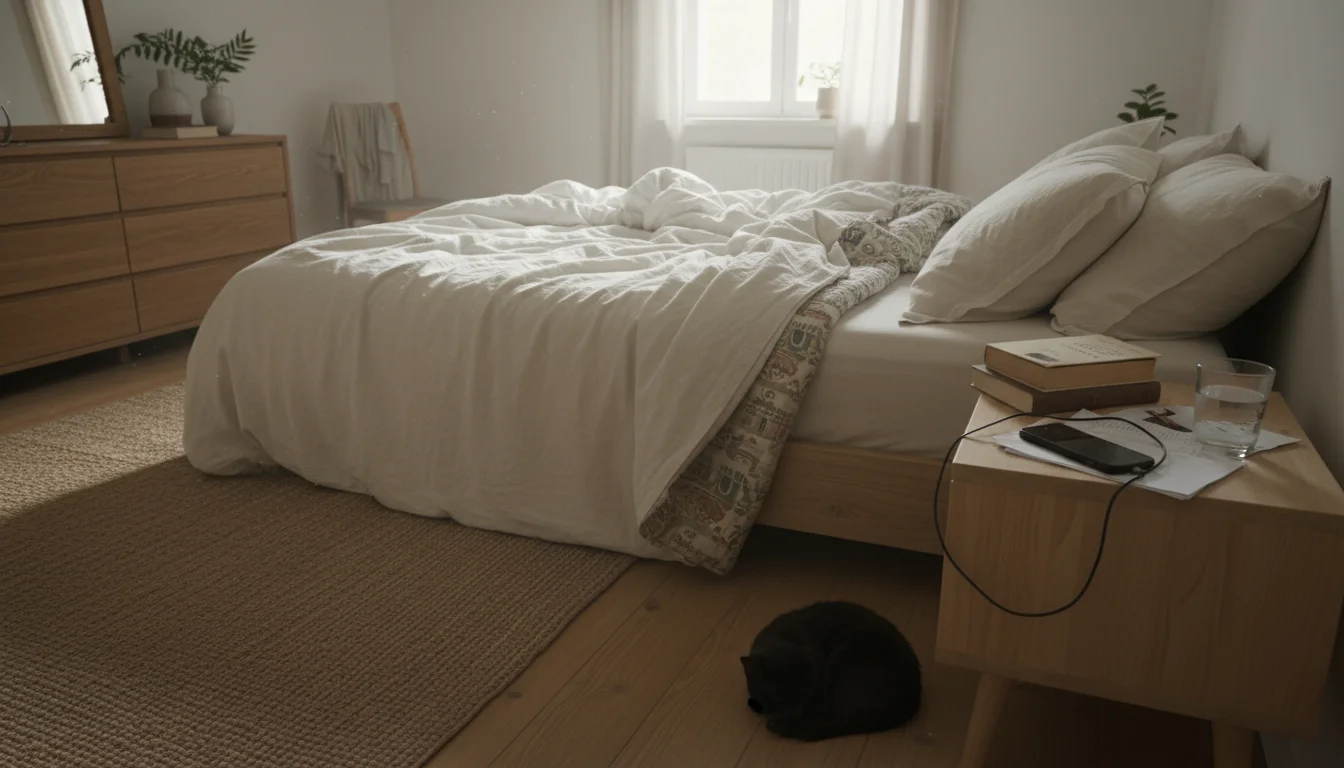
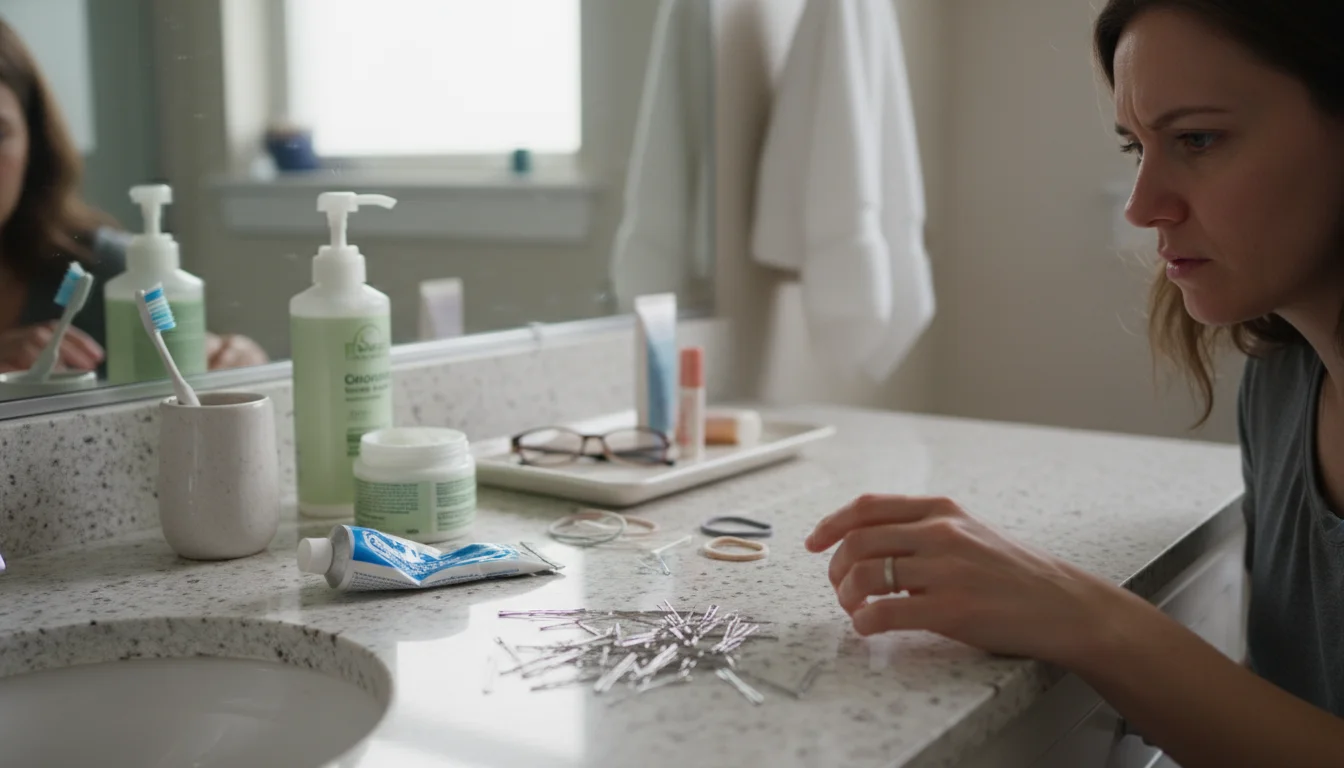
Leave a Reply